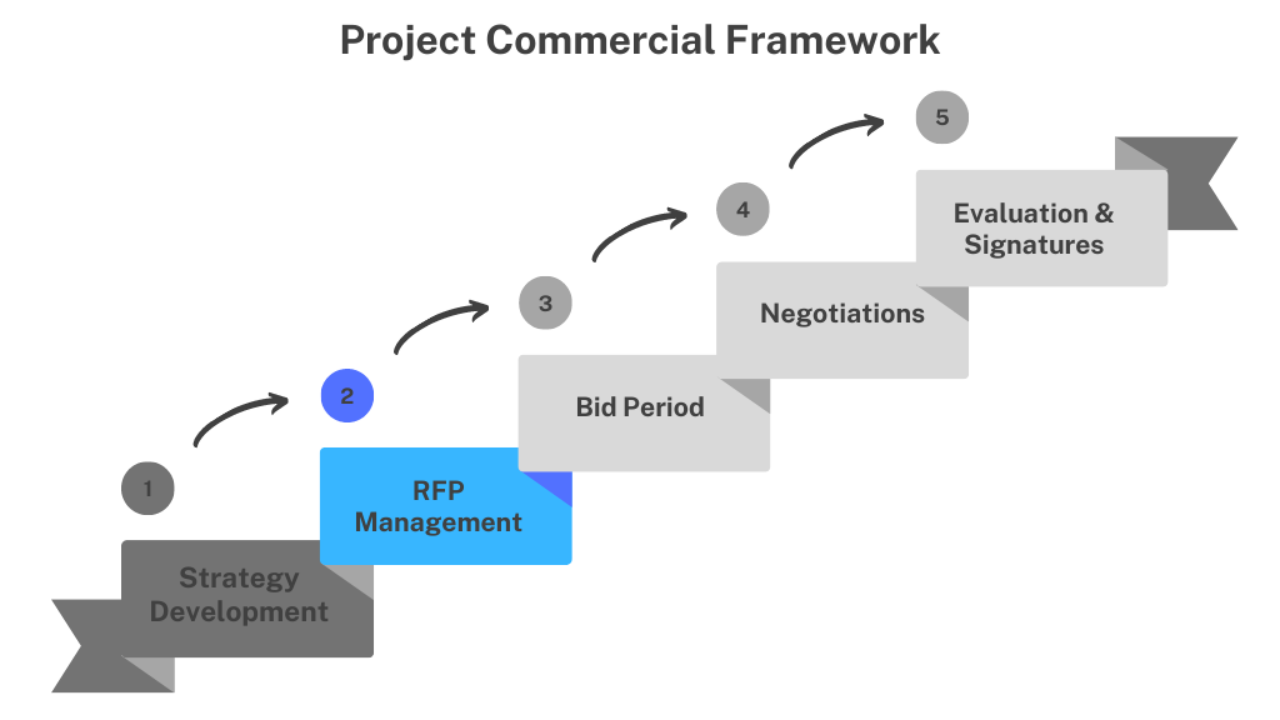Is poor RFP quality costing you?
Aug 09, 2023
Here we are following on a previous post “How to Set Yourself up for Contracting Success” which can be found here. In that article we broke down the 5-step process to help you develop your Contract Strategy.
Now, we are moving into the second phase “RFP Management” of the Project Commercial Framework.
Before we jump into it, I want to quickly pause…
Here’s why.
Far too often this step gets skipped!
Or if not skipped, it gets skimped which can be equally as bad.
As a result, we’ve seen some REALLY bad RFPs issued to the market.
Frankly, some of them look like a dog’s breakfast:
- Information is duplicated, if not contradictory
- Terms are inconsistent (e.g., sometimes you’re “Contractor”, or “Consultant”, or “Bidder”)
- Terms & Conditions are plagued with risk and don’t match the owner’s intent or incentive
Whatever the case the documents aren’t singing to the same sheet of music.
This is problematic not only for the owner requesting services but for the bidder too.
What an owner is going to get back is a total crap shoot…
Even worse, with multiple bidders, it’s virtually impossible to compare apples to apples when you’ve got apples and oranges.
Sure, a robust Contract Strategy is fundamental and helps you ensure internal alignment, but its primary purpose is as a guide.
It doesn’t help you communicate what you want back from a bidder in terms of a proposal.
So, how do you go about making sure your documents are singing to the same sheet of music?
In the Project Commercial Framework, we lean towards the following structure:
- Part I – Instructions to Bidders (sets forth the administrative and other requirements for a proposal).
- Part II – Form of Proposal (sets forth the complete structure and detailed content requirements for a proposal).
- Part III – Form of Agreement (sets forth a detailed description of the scope of work, compensation basis, and terms and conditions to be applicable to the services).
What’s key about this structure resides in the simplicity of Part II – Form of Proposal.
This is your one stop shop for EVERYTHING you want back in a bidder’s proposal.
And I by everything I mean information like:
- Bidder’s Exceptions
- Proposed Key Personnel and CV’s
- Execution Plans/Method Statements
- Pricing and Commercial Terms
- Schedules
- Safety and Environmental Statistics (if you don’t have them already)
- Financial Statements
- Client References
- Etc.
When you ask for everything in one place, the likelihood of getting everything you want increases dramatically.
Trust me.
It’s worth the time, effort, and energy to get this right up front.
The cost of trying to pull all of the information together from a myriad of documents in order to conduct your evaluation simply isn’t worth skipping this step!
With a sound RFP in place, I highly encourage you to walk the bidders through the contents of the package.
We like to schedule a meeting about a week after sending the RFP to the street. This allows you to set expectations, establish rapport, and answer any preliminary questions. While it might seem trivial, I'm highly confident this pre-bid discussion leads to better proposals and a better contract overall.
During these meetings we like to give bidders an indication of what criteria we'll be using to evaluate their proposals. A key point here, we give them the criteria only, not the criteria weightings.
Finally, I think it's critical to establish a single individual within your organization for bidder / owner communication and coordination. This single window of communication ensures all parties receive the same information via a named "RFP Manager".
Let me know what you think?
To your success!
We are passionate about doing things better – no more horrifying industry statistics – there is a better way! Grab a time to meet with me 1:1 to discuss the unique challenges of your project.

